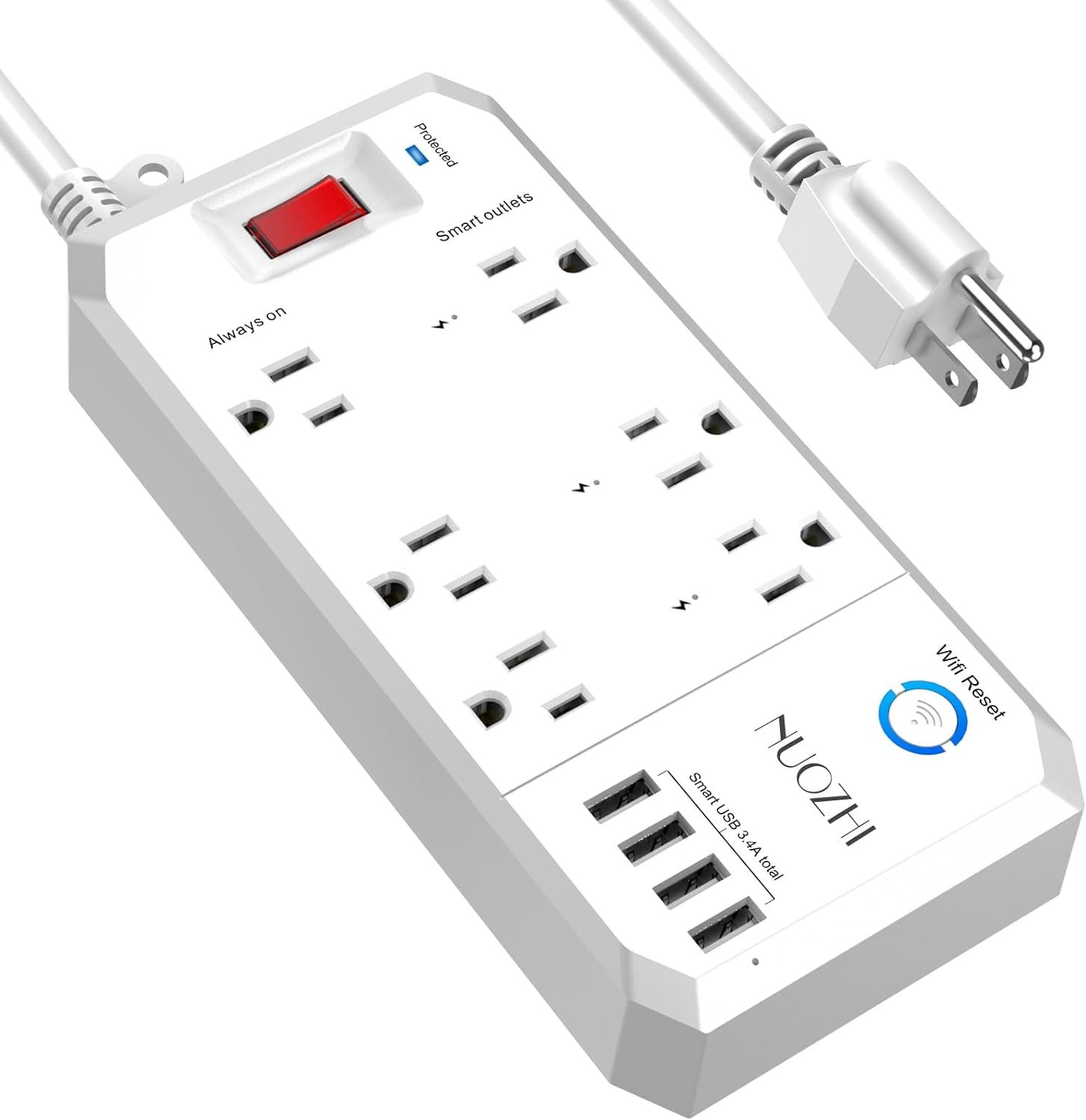Estimated reading time: 17 minutes
Introduction
In today’s digital era, network administration is a pivotal aspect of technological infrastructure. Tracing back its evolution, the journey from basic network management tools to today’s sophisticated free network admin tools encapsulates a remarkable shift in the IT landscape. These tools, crucial for network performance and network device management, have become indispensable for modern network administrators. They are not just facilitators of connectivity; their role encompasses the management of complex network configurations, ensuring robust security, and optimizing operational efficiency. The emergence of free versions of these tools has democratized network management, making it accessible even to organizations with limited resources. This evolution highlights the growing significance of effective network tools in maintaining the seamless operation of both small and large-scale networks.
Diving deeper into the functionalities, these network administrator tools address a spectrum of needs, from basic network discovery to advanced network traffic analysis. The question of what is a network administrator tool? Extends far beyond traditional definitions, encompassing software that provides real-time insights, predictive analytics, and proactive troubleshooting capabilities. These tools, especially in their free edition, are not just about maintaining the status quo but are pivotal in foreseeing potential issues and preemptively addressing them. Such capabilities are vital in today’s fast-paced, data-driven world, where network downtime can result in significant operational disruptions. The role of a network administrator has thus evolved, demanding technical expertise and strategic foresight powered by these advanced network tools. In essence, the landscape of computer network administration and management has been reshaped, driven by the innovation and accessibility of these transformative tools.
Key Takeaways
- Free network admin tools empower organizations of all sizes to manage and secure their networks effectively, demonstrating the democratization of network technology.
- A wide range of free network monitoring tools cater to diverse network management needs, from basic health checks to advanced traffic analysis and security.
- Free network admin tools are vital for proactive network management and troubleshooting, helping maintain network integrity and performance.
- The evolution of network monitoring tools underscores their critical role in managing complex network environments, ensuring optimal performance.
- Comparisons between free and paid network tools highlight that while free tools are ideal for basic functions and small networks, paid tools provide comprehensive features necessary for larger, more complex setups.
- The practical application of free network monitoring tools, like Wireshark and Nagios Core, enhances network management by providing real-time insights and effective troubleshooting capabilities.
Overview of Best Network Monitoring Tools
The Significance of Network Monitoring Tools in Modern Network Administration
In the intricate world of modern technology, network monitoring tools have emerged as the backbone of efficient network administration. These tools, vital in overseeing and maintaining the health of many networks, have evolved significantly, becoming indispensable in a world where digital connectivity is paramount. The essence of these tools lies in their ability to provide real-time insights and analytics, crucial for ensuring optimal network performance. Whether it’s a small enterprise or a large corporation, network monitoring tools are pivotal in managing the complexity of today’s network environments.
Best Free Network Admin Monitoring Tools:
- WireShark: A renowned network protocol analyzer with detailed data capture capabilities.
- PRTG Network Monitor: Recognized for its versatility in monitoring network performance and network map functionalities.
- SolarWinds Network Performance Monitor: A comprehensive tool offering advanced features like network status visibility and network security monitoring.
- Paessler PRTG Network Monitor: An integrated solution for monitoring network services and devices on your network.
- Other Tools: Including free and open-source options and those offering a 30-day or 14-day free trial.
Understanding Network Monitor Basics
Network monitors serve as the eyes and ears of the network manager, providing crucial information about the state of your network. They are designed to track network utilization, monitor network connections, and map out the network topology. These tools are crucial in troubleshooting network issues, ensuring network security, and optimizing the entire network performance. In essence, a network monitor is a comprehensive network monitoring system that can oversee devices on the network and manage network services across various platforms and operating systems.
As a network administrator, I have traversed the landscape of various network monitoring tools. From simple sysadmin tools like basic network mappers to more sophisticated systems like SolarWinds and PRTG, each tool brought a unique perspective to network performance management. I recall a situation where Wireshark, a free network tool, was pivotal in identifying a critical network protocol issue affecting network performance. The ability of these tools to provide a comprehensive view of the network status, from network traffic to network security, has been invaluable in my role.
Comparing Free vs Paid Network Admin Monitoring Tools
The debate between free and paid network monitoring tools is a pivotal one. Free network tools often provide basic functionalities, making them ideal for small-scale networks or those just starting with network monitoring. They are often simple network management protocol tools, offering insights into the network’s current state. However, paid tools bring a more comprehensive network monitoring experience. They offer advanced features like network performance monitor, network map, and inventory and network analysis, essential for managing complex networks. Paid tools often come with dedicated support and regular updates, which can be critical for network management and monitoring your network effectively.
The realm of network monitoring tools is diverse, ranging from free network monitoring solutions like Wireshark and free versions of PRTG, to comprehensive paid options like SolarWinds. These tools are essential for network administrators in managing network performance, ensuring network security, and keeping a vigilant eye on the network’s health. Whether opting for a free tool or investing in a paid solution, the choice depends on the specific needs of the network, the scale of operations, and the desired level of detail in network monitoring. The right network monitoring tool can make a significant difference in the efficiency and security of a network, making it a critical decision for any network manager or system administrator.

Exploring Free Network Admin Monitoring Software Tools
The Advantages of Using Free Network Monitoring Software
In the intricate landscape of network administration, free network monitoring software is increasingly becoming pivotal. These free-to-use tools offer an accessible gateway for monitoring and managing the vast expanse of networks. They stand out not just for their cost-effectiveness but also for their ability to deliver significant functionalities, often comparable to paid versions. The essence of these tools lies in their capability to enhance network performance, ensure security, and provide critical insights – all without straining the budget.
Comparison of Popular Free Network Admin Monitoring Software Tools
| Software Name | Key Features | Network Capabilities | Ideal Use Case |
|---|---|---|---|
| Wireshark | Protocol analysis, real-time data capture | Deep inspection of network protocols, troubleshooting | IT professionals, network training |
| Nagios Core | Comprehensive monitoring, alerting | Across your network, focus on network health | Small to medium-sized networks |
| Zabbix | High-performance, scalable | Large-scale network monitoring, network diagrams | Enterprises requiring scalable solutions |
| PRTG Network Monitor (Free Edition) | Customizable dashboards, sensor-based architecture | Detailed network topology map, data analysis | Versatile environments, dynamic networks |
Key Features of Effective Monitoring Software
Essential features of ineffective free network monitoring software include real-time monitoring, comprehensive network topology maps, and alert systems that notify administrators of any anomalies or issues. The best tools provide a suite of features that cater to varied network scenarios, making them versatile for both simple and complex network environments. Compatibility with a wide range of hardware and software setups and the ability to handle data from various network devices are also crucial for effective network management.
Case Study: An educational institution once faced challenges with its network management, primarily due to budget constraints. They adopted Zabbix, a robust, free network monitoring tool. This software streamlined their network monitoring and enhanced their overall network efficiency. The real-time data and analytics provided by Zabbix allowed the IT team to proactively manage the network, leading to improved performance and reduced downtime.
How Free Software Can Enhance Network Management
Free network monitoring tools like Wireshark and Nagios Core can significantly improve network management practices. They enable network administrators to gain insights into network utilization, identify potential issues, and monitor network traffic patterns. These tools help maintain smooth network operations, essential for any organization’s success in today’s digital age.
Free network monitoring software like Wireshark, Nagios Core, Zabbix, and PRTG Network Monitor (Free Edition) offer valuable capabilities to network administrators. These tools provide vital functionalities – from real-time monitoring to extensive network mapping – key to effective network management. Their cost-effectiveness and high functionality make them an attractive option for businesses and organizations aiming to optimize their network operations without substantial financial investments.
The Role of Network Admin in Troubleshooting
The Critical Role of Network Admin in Maintaining Network Health
In the intricate world of modern networking, the network administrator plays a vital role in ensuring the health and efficiency of network systems. Their responsibilities extend beyond simple maintenance; they are the guardians of network stability and performance. Utilizing a range of network administration tools, these professionals delve into complex scenarios to troubleshoot and resolve issues that could potentially cripple network operations. With the right tools for network administrators, they can efficiently manage and rectify problems within your network, ensuring minimal downtime and optimal performance.
Case Study: Consider the case of a large corporation facing intermittent network outages that eluded initial analysis. The network admin team employed advanced network monitoring capabilities, including data from network devices and real-time analytics. Using a suite of tools – free to use and premium – they identified a recurring pattern pointing to a specific network segment. By correlating data from various sources and employing sophisticated network troubleshooting tools, they isolated the fault to a firmware issue in several network switches. This swift identification and resolution showcased the indispensable role of network admins and their tools in maintaining network integrity.
Best Practices for Network Troubleshooting
Effective network troubleshooting hinges on several best practices. First, a comprehensive understanding of the network using various monitoring tools is crucial. Network admins should employ a set of tools that allows them to monitor network traffic across the network, including many network devices. Regular network audits, proactive monitoring, and timely updates are key strategies. Additionally, leveraging free administration tools can be a cost-effective way to supplement their toolkit, especially for routine checks and basic troubleshooting tasks.
An industry expert once noted, “The role of network administrators in troubleshooting is akin to detectives solving a mystery. They must piece together clues from various network devices and data points to diagnose and resolve complex network issues.” This analogy aptly highlights the investigative nature of troubleshooting and the critical role network admins play in this process.
Challenges in Network Troubleshooting and Solutions
Network troubleshooting is rife with challenges, ranging from identifying the problem’s source to dealing with the complexity of modern networks. Common issues include hardware failures, software bugs, and security breaches. Network admins can overcome these challenges by using a system that will raise an alert for unusual activities, employing network monitoring tools that provide comprehensive insights, and staying updated with the latest technologies and security practices. Additionally, free network tool used offer an accessible way to enhance monitoring and troubleshooting capabilities, especially for small to medium-sized businesses.
Network administrators play a crucial role in troubleshooting and maintaining network health. Their expertise, aided by a range of network tools, both free and premium, allows them to tackle various challenges efficiently. By adhering to best practices, staying informed about emerging technologies, and utilizing an effective mix of tools, network admins can ensure that networks remain robust, secure, and high-performing. This crucial role underscores the importance of skilled network administrators in seamlessly operating modern digital infrastructures.

Essential Features of Free Network Management Tools
Exploring the Must-Have Features in Free Network Management Tools
In the intricate world of network administration, free network management tools have become indispensable assets. These tools offer a cost-effective way to manage and optimize network performance, making them a go-to option for many network professionals. The effectiveness of these tools, however, hinges on certain essential features that cater to the diverse needs of network environments. Understanding what constitutes these must-have features is key to selecting the right tool that addresses the specific requirements of a particular network and enhances overall network management efficiency.
As a seasoned network manager, I’ve had the opportunity to work with a wide array of network management tools, both free and paid. My journey began with basic tools that offered limited functionality, often leading to cumbersome network management tasks. Over time, as I explored various free tools will help, I discovered that some offered robust features that rivaled their paid counterparts. This revelation was a game-changer, significantly improving how I managed and monitored the network around the network. The experience underscored the importance of carefully evaluating each tool’s features to ensure they meet the specific needs of the network environment.
Evaluating User-Friendly Interfaces in Free Tools
One of the most crucial aspects of any network management tool is its user interface. A user-friendly interface is vital as it greatly influences the efficiency and effectiveness of network management tasks. A well-designed interface simplifies complex tasks, making it easier for network administrators to monitor and manage the network. The interface should provide clear, intuitive navigation and easy access to essential functions, ensuring that even those with limited technical expertise can effectively use the tool. This emphasis on user experience is echoed by network experts, who often highlight it as a key determinant of a tool’s usefulness.
An expert in network management once stated, “The best network tools are those that turn complexity into simplicity. They provide powerful capabilities behind a user-friendly facade, making network management less of a chore and more of an efficient, manageable process.” This insight captures the essence of what makes a network management tool truly effective – its ability to simplify complex network tasks through a user-friendly interface.
Integration and Compatibility with Existing Systems
Another critical feature of effective network management tools is their integration and compatibility with existing systems. In today’s interconnected world, networks comprise various components and technologies. A capable network management tool must seamlessly integrate with these diverse elements, providing a unified view of the entire network. This integration capability ensures network administrators have comprehensive visibility and control over the network, enabling them to manage and troubleshoot issues more effectively.
The essential features of effective free network management tools include a user-friendly interface, robust integration capabilities, and compatibility with various network components. These features are critical in ensuring network administrators can effectively oversee and manage their networks. As the technology landscape evolves, these tools will remain vital in helping network professionals maintain efficient, secure, and optimized network environments. Finding the right tool might be challenging, but understanding these key features can significantly aid in making an informed choice.
Analyzing Network Traffic with Free Tools
The Importance of Network Traffic Analysis in Network Administration
In the dynamic world of network administration, network traffic analysis is a critical component. It involves the rigorous examination of data packets moving across the network, providing invaluable insights into the health and performance of network infrastructure. This analysis is crucial for identifying and resolving network issues, optimizing bandwidth usage, and enhancing overall network security. In recent years, free network traffic analysis tools have democratized this essential process, making it accessible to network administrators everywhere, regardless of budget constraints.
Tools for Network Traffic Analysis:
- Wireshark: Renowned for its detailed packet analysis capabilities.
- SolarWinds Network Traffic Analyzer (Free Version): Offers comprehensive insights into traffic patterns.
- Nagios XI: Known for its robust monitoring and alerting features.
- PRTG Network Monitor (Free Edition): Provides a user-friendly interface for traffic analysis and network monitoring.
Benefits of Real-Time Network Traffic Monitoring
Real-time network traffic monitoring, a key feature of these tools, offers numerous advantages. It enables network administrators to immediately detect and respond to issues as they arise, rather than after the fact. This proactive approach to network management can significantly reduce downtime and improve network performance. Real-time analysis ensures that network administrators have up-to-the-minute information, making it easier to pinpoint the source of problems, understand usage patterns, and optimize network resources effectively.
Case Study: In one notable instance, a medium-sized enterprise faced recurring network slowdowns that impacted business operations. By implementing Wireshark, the network team could analyze traffic in real time. They quickly identified a misconfigured server flooding the network with unnecessary data. This timely intervention, facilitated by the free tool, resolved the issue before it escalated into a full-blown crisis, showcasing the critical role of traffic analysis in network management.
Understanding Network Traffic Patterns with Free Tools
Free tools are particularly adept at providing insights into network traffic patterns. They allow network administrators to visualize the data flow across the network, identifying trends, and anomalies. This analysis is vital for capacity planning, understanding peak usage times, and ensuring the network can handle the expected load. These tools allow administrators to make informed decisions about network expansions, security policies, and performance optimizations.
The analysis of network traffic is a cornerstone of effective network administration. The availability of free tools for this purpose has made it easier for network administrators to maintain optimal network performance and security. These tools offer real-time monitoring, detailed traffic analysis, and the ability to understand complex network dynamics without incurring significant costs. As network environments evolve and complexity, these free network traffic analysis tools will become increasingly important in helping administrators manage their networks efficiently and proactively.

Network Monitoring for System Administrators
The Evolving Role of System Administrators in Network Monitoring
System administrators’ role in network monitoring has witnessed a significant evolution, paralleling the rapid advancements in network technology. Today’s system administrators are expected to be adept in managing and maintaining network infrastructure and proactive monitoring and optimization. This shift has brought network monitoring to the forefront of system administration, making it an essential aspect of their role. Effective network monitoring ensures the robustness and efficiency of an organization’s network, crucial for uninterrupted business operations.
Best Network Monitoring Tools for System Administrators
| Tool Name | Features | Best For |
|---|---|---|
| Wireshark | Protocol analysis, real-time data capture | Detailed traffic analysis |
| Nagios XI | Comprehensive monitoring, alerting capabilities | Large networks with complex requirements |
| SolarWinds Network Performance Monitor | Visual analysis, performance insights | Mid to large-sized organizations |
| PRTG Network Monitor | Customizable interfaces, broad sensor support | Versatile network environments |
Essential Tools in a System Administrator’s Toolkit
For a system administrator, certain tools are indispensable for effective network monitoring. These include network analyzers like Wireshark, which provide deep insights into network traffic and are instrumental in diagnosing network issues. Monitoring tools like Nagios XI and SolarWinds Network Performance Monitor offer comprehensive views of network health and are essential for preemptive monitoring and quick troubleshooting. The ability of these tools to raise an alert systemically in case of anomalies is critical for maintaining network integrity. Additionally, real-time data analysis tools help system administrators make informed decisions swiftly.
In my experience as a system administrator, embracing a suite of network monitoring tools has been transformative. Early in my career, I relied on basic tools which offered limited insights, often leading to reactive network management. However, with tools like PRTG Network Monitor, I was able to shift to a more proactive approach. These tools allowed me to anticipate potential issues, optimize network performance, and maintain a stable network environment, significantly reducing downtime.
Adapting to New Technologies in Network Monitoring
Staying abreast of new technologies in network monitoring is crucial for system administrators. The network landscape is constantly evolving, with new challenges and complexities emerging. Tools that were effective yesterday might not suffice today. Therefore, it’s essential to explore and adopt new tools and technologies continuously. This adaptation enhances the capability of network monitoring and ensures that the network remains resilient against emerging threats and efficient in its operation.
The role of system administrators in network monitoring is more critical than ever. It involves not just the use of traditional tools but also adapting to and integrating new technologies. The right set of tools enables system administrators to monitor, manage, and optimize networks, ensuring their reliability and efficiency. This proactive and informed approach to network monitoring is pivotal in supporting the seamless operation of modern digital infrastructures, underscoring the invaluable role of system administrators in today’s technology-driven world.

- NUOZHI WiFi Power Strip with 3 Smart Outlets
- 3 Always on outlets
- 4 USB Ports(Smart 3.4A Total)
- 1250W/10A, White
Conclusion
In this comprehensive exploration of free network admin tools, we’ve delved into various aspects that underscore their critical role in modern network management. From the overarching significance of network monitoring tools in maintaining network health to the detailed analysis of network traffic, these tools have proven indispensable in network administrators’ arsenal. We discussed the evolving role of system administrators and how these tools empower them to monitor and manage complex network environments effectively. The insights provided on real-time network traffic monitoring and the integration capabilities of these tools highlight how they contribute significantly to proactive network management. Notably, the case studies and personal anecdotes have illustrated the practical impact of these tools in real-world scenarios, further emphasizing their utility.
The journey through various free network admin tools has illuminated one undeniable truth: these tools are both a convenience and a necessity in today’s interconnected world. They democratize network management, making sophisticated monitoring and troubleshooting capabilities accessible to all, regardless of budget constraints. The phrase “it’s free” no longer implies limited functionality but opens up a world of possibilities for robust network management. Whether it’s a system that will raise an alert during anomalies or tools that seamlessly integrate into existing networks, these free resources play a pivotal role in ensuring the smooth operation of network infrastructures. In conclusion, the value offered by these free network admin tools in managing and optimizing networks is immeasurable, making them invaluable assets in the domain of network administration. Their ability to keep pace with evolving network technologies ensures that network administrators are well-equipped to face the challenges of modern network management.

James Dunnington is a versatile professional whose career spans over 20 years, merging wildlife conservation, digital expertise, interior design, and insights into the world of technology and finance. Starting with his passion for the natural world, he explored diverse ecosystems, gaining unique insights into animal behavior. Transitioning into the digital realm, James harnessed his skills to build a successful blogging career, becoming known for his ability to significantly improve online visibility for various projects.
In parallel, he established himself as a certified interior designer, where his projects stand out for their timely completion and innovative design, endorsed by local government standards. Beyond design, James ventured into cryptocurrency and digital marketing, showcasing his adaptability and forward-thinking approach.
He also demystifies technology, offering easy-to-understand advice on the latest tech trends and cybersecurity. James Dunnington embodies a unique blend of expertise across multiple fields, from the natural environment to the digital world, making him a dynamic and multifaceted professional.







